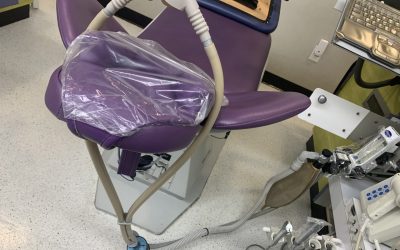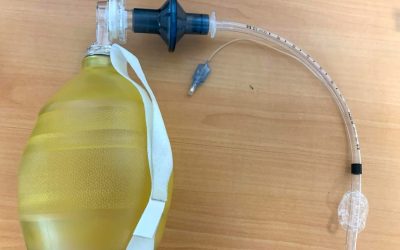Respiratory health has become a top priority in today’s world, and it’s essential to ensure the accuracy and reliability of spirometry equipment. One crucial step in achieving this is recalibrating the 3-liter calibration syringe. In this blog post, we’ll provide a complete and easy-to-understand guide to the annual recalibration process, ensuring that your spirometry results are accurate and reliable.
We outline the following short topics in this post. Feel free to jump ahead.
What Is a 3-Liter Calibration Syringe?
A 3-liter calibration syringe is aknown volumeof air that helps measure the accuracy of spirometers, body plethysmographs, and other pulmonary function analyzers on a daily basis. The 3-liter syringe must be recalibrated by the manufacturer annually to ensure its accuracy and to comply with national and international standards.
How Is a 3-Liter Calibration Syringe Used?
A 3-liter calibration syringe is essential for maintaining the accuracy of spirometers and ensuring reliable measurements during spirometry maneuvers. TheStandardization of Spirometry 2019 Updaterequires the following method for the daily verification.
Maintaining the syringe at room temperature is crucial for accurate calibration. During the daily verification, it is important to avoid holding the cylinder to avoid raising the temperature inside the syringe and introduce measurement errors. Additionally, operators should be cautious if the syringe has an adjustable or variable stop. Resetting or accidentally moving the stop can result in an out-of-calibration syringe.
Using a 3-liter syringe, these calibration verifications should be performed at least once daily. The syringe should be cycled at least three times, creating a range of flows varying between 0.5 and 12 liters per second, with injection times ranging from 0.5 to 6 seconds. If an in-line filter is used during spirometry testing, it must also be utilized during recalibrations and verifications.
During these verifications, the measured volume at each flow should meet the accuracy requirement of ±3% for both inspiration and expiration, or ±3% for expiration only for volume-based spirometers. For spirometers that use disposable flow sensors, it is necessary to test a new sensor from the supply used for patient tests on a daily basis.
Many modern spirometers come with software that can guide you step-by-step through the verification task.
必须一个日志的维护和校准记录be maintained for both the spirometer and the syringe.
How Do I Take Care of the 3-Liter Calibration Syringe?
TheAmerican Thoracic Society (ATS)and the U.S.Occupational Safety and Health Administration (OSHA)outline the following requirements for maintaining the 3-liter syringe.
- Keep the syringe in the same area as the spirometer.
- Keep them away from direct sunlight.
- Test the syringe for leaks monthly by corking the outlet. If a leak is discovered, return it to the manufacturer for repair and recalibration.
- If the syringe is dropped or damaged, or the adjustable stop (if it has one) is moved, return it to the manufacturer for repair and recalibration.
- Inspect the piston stop daily for any changes.
- Verify the accuracy of ±0.015 L (±0.5%) on delivery and annually.
- 必须一个日志的维护和校准记录be maintained for both the spirometer and the syringe.
At A-M Systems, a calibration certificate always accompanies the 3-liter syringe.The calibration certificate declares that the accuracy is within ±0.25%, which exceeds ATS standards, and is our declaration that the calibration was performed to NIST-traceable standards.
How Do I Verify the Accuracy and Recalibrate the 3-Liter Syringe?
The 3-liter calibration syringes must be recalibrated annually to comply with ATS and ERS guidance and national and international regulatory requirements. Recalibration involves taking the syringe apart to check for and replace any worn or damaged parts as well as the lubricant that keeps the piston moving smoothly.
Most importantly, all the measuring instruments used to calibrate and recalibrate the syringe must be traceable to NIST. The National Institute of Standards and Technology develops and maintains universal standards for measurements and calibration. Without those standards, the volume of the 3-liter syringe could vary widely. In fact, no one would know the true volume of the syringe.
At A-M Systems, a calibration certificate always accompanies the 3-liter syringe. The calibration certificate declares that the accuracy is within ±0.25%, which exceeds ATS standards, and is our declaration that the calibration was performed to NIST-traceable standards.
The certificate also shows the date of calibration and the next calibration due date. But don’t worry. We will remind you of the 3-liter syringe calibration due date a few weeks ahead of time.
You canorder the 3-liter syringe calibration, or recalibration, on our website. We will email you a prepaid UPS Return Label, which contains the serial number of the syringe you are recalibrating. Place your syringe in the box, cover the old label with the new one, and return it to us.
You will receive your recalibrated syringe within a few weeks. If you have only one calibration syringe andwould like to avoid any downtime, we offer a new 3-liter syringe and the calibration of your old syringe at a substantially reduced cost. That way, you can stagger the calibration.
Before using the 3L calibration syringe:
Twist the handle clockwise while pushing the piston back and forth a few times.
How to “Warm-Up” the Syringe for Use
The 3-liter calibration syringe may need to “warm up” to prepare it for a successful daily verification of your spirometer. This is especially true if your calibration syringe has fallen into disuse. Follow the tips below to get it going.
- Twist the handle clockwise while pushing the piston back and forth a few times.
- Do this a few times to evenly distribute the lubricant.
- This ensures that the syringe piston will glide smoothly.
- This helps eliminate most instances of sticking or catching.
It is vital to regularly maintain and calibrate your spirometry equipment to guarantee accurate and reliable test results. Following the ATS guidelines for annual recalibration of the 3L calibration syringe can help you ensure that your spirometry results meet industry standards and prevent errors caused by faulty equipment. By taking care of your equipment and conducting regular maintenance, you can provide patients with the highest quality care and guarantee reliable results.





0 Comments